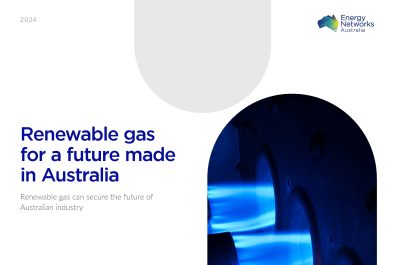Releasing stored-up opportunities
Energy storage devices represent an increasingly efficient option to address local network issues such as peak/minimum demand and voltage regulation. However, the regulatory framework currently limits distributors’ ability to provide certain energy storage services to customers and their capacity to increase the viability of energy storage devices. We look at the Australian Energy Regulator’s (AER) ring-fencing framework and what needs updating to ensure consumers can benefit fully from distributors’ adoption of technology.
AER’s ring-fencing review
The AER is reviewing the Electricity Distribution Ring-fencing Guideline (the Distribution Guideline) in recognition of the impact that emerging technologies and the energy market transition are having on the regulatory framework. ENA touched on the review in a previous Energy Insider article, made a formal submission to the AER’s Issues Paper, and also attended the AER’s stakeholder workshops.
Here, we are going to delve further into the role of energy storage devices, a key focus of the AER’s review.
Energy storage devices
Energy storage devices can currently be used by electricity distribution networks to provide a number of distribution services, including:
- Voltage support to enable additional hosting of distributed generation,
- Peak demand management to defer network upgrades – both at a local level and at a regional level,
- Optionality – can deal with an increase in load and an increase in generation,
- Managing fault levels in areas with high solar generation to ensure appropriate operation of protection schemes, and
- Phase balancing.
While distributors can use energy storage devices to provide distribution services, the AER’s existing service classifications and ring-fencing framework limit distributors’ ability to provide certain energy storage services to customers.
The ESB’s Health of the National Electricity Market Report observed that: At present the ownership of batteries within the network is constrained and this may not be optimal nor fit with the role of the network if it is to be a platform to provide services.[i]
Without going through the AER’s costly and lengthy waiver process, distributors are precluded from increasing the viability of energy storage services by, for example, leasing out spare capacity or offering customers access to a shared storage service (i.e., currently non-distribution services). This is commonly referred to as value stacking and allows the same storage device to be used for multiple purposes, including distribution and non-distribution services.
Distributors can value stack energy storage devices, and provide non-distribution services either:
- indirectly (i.e., through a third party) → an example of this is the United Energy trial, which is installing 40 new pole-mounted battery energy storage system units in the low voltage network as part of a trial to provide network peak demand support (a distribution service). In order to deliver the greatest benefits to consumers and a lower cost outcome for consumers from the installation of the storage units, United Energy is partnering with a retailer selected under a competitive process. The retailer partner will use the storage units to provide non-distribution services.
- directly → an example of this is Ausgrid’s virtual trial of a community battery, which provides a community storage solution for solar customers (which is not currently classified as a distribution service) and a more cost-efficient alternative to traditional poles and wires investment to address peak demand (a distribution service).
In Western Australia, which operates outside of the National Electricity Market framework, Western Power is partnering with Synergy to install three community-scale batteries.
Framework changes
ENA supports the AER’s position that the ring-fencing framework needs to be able to accommodate energy storage devices, including value stacking, when it results in consumer benefits. We support a focus on positive customer outcomes rather than the simple promotion of theoretical competition benefits.
Enabling value-stacking reduces the cost to all consumers of distributors providing distribution services and would foster the energy storage market and provide incentives for third parties to enter.
ENA therefore strongly supports an amendment to the Distribution Guideline[ii] to enable distributors’ indirect use of energy storage devices to provide non-distribution services, which will ensure that customer benefits are not delayed or eroded by a lengthy and costly waiver process. Distributors’ direct use of energy storage devices to provide non-distribution services at this stage can continue to rely on an improved and streamlined waiver application process that decreases regulatory and investment uncertainty, including improvements such as:
- the issuing of waivers that last for the life of the asset rather than having to reapply each regulatory control period,
- the development of a waiver template, and
- the implementation of a time limit on the waiver approval process.
Importantly, these amendments will not provide the distributor with exclusivity over service provision. Distributors are regulated under an incentive-based system that continuously encourages networks to find better ways to efficiently service customers. Distributors will respond to the incentive regime in practice and seek out the most efficient option, as they do currently.
Protection measures
The possibility of any harm arising from distributors investing in energy storage devices should be addressed directly rather than by simply preventing the realisation of consumer benefits from distributors using energy storage devices to provide distribution and non-distribution services.
Potential harms that could result from cross-subsidising and discriminatory behaviour are currently addressed through the Distribution Guideline by placing a number of obligations on distributors, such as the requirement to establish and maintain separate accounts and allocation of costs. In addition, distributors prepare and submit annual ring-fencing compliance reports to the AER that include an assessment of compliance undertaken by a qualified independent party. These reports are available publicly on the AER’s website, and the AER also publishes an annual ring-fencing report.
Notwithstanding the breadth of the current measures, there are opportunities to further strengthen these obligations, including but not limited to:
- The introduction of a shared battery register.
- An enhancement to the ring-fencing non-discrimination provisions.
- The development of an energy storage device cost allocation guideline that outlines a methodology and/or principles for cost allocation for energy storage devices.
It is essential that potential harms are addressed directly in a targeted manner rather than preventing the realisation of consumer benefits from distributors using energy storage devices.
[i] Energy Security Board, Volume 1: The ESB Health of the NEM Report 2019, 24 February 2020, page 39 [emphasis added].
[ii] Specifically, an amendment of clause 3.1(d) of the Distribution Guideline to make it clearer that, in addition to ‘shared assets’ for the purposes of the shared asset rules, it also applies to other circumstances in which third parties might use a distributor’s assets to provide distribution services, transmission services or other services.



